Here is a new blog post from a guest author contributing to Lang’s Home Remodeling’s website. All views expressed are those of the author.
The convergence of kitchen and living spaces has become a defining characteristic of modern home design, where the strategic use of color palettes and materials plays a pivotal role in creating seamless transitions between functional areas.
Interior design professionals are witnessing a significant shift toward warmer tones and natural elements, moving away from the once-popular cool grays and sterile whites that dominated contemporary spaces.
The art of blending these connected areas lies in the thoughtful integration of biophilic design principles, combining organic materials with sophisticated color selections to create environments that are both aesthetically pleasing and functionally cohesive.
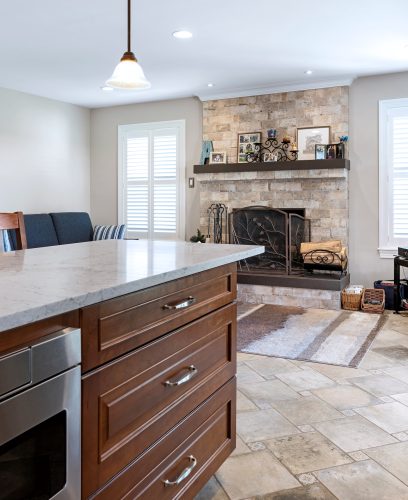
Warm and Natural Color Trends
Interior design professionals have identified that homeowners are shifting away from cool grays and sterile whites, embracing warmer tones in their living spaces. These standout colors blend comfort with sophistication, featuring rich shades like Cinnamon Slate and Mocha Mousse that create an inviting atmosphere perfect for modern homes. These hues have proven particularly effective when selecting furniture pieces, such as a cozy sofa bed that complements both kitchen and living spaces.
Blues and greens have evolved beyond accent colors to become the new neutrals in contemporary design. From sage green to navy blue, these versatile shades provide a stable foundation for your design and color scheme while maintaining visual interest. Deep ocean blues and forest greens particularly excel in creating a seamless transition between kitchen cabinetry and living room walls to create a cohesive, blended design.
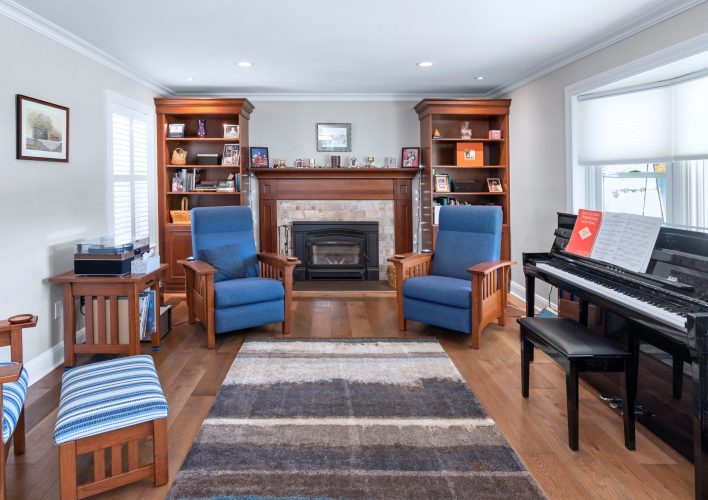
Trending Color Combinations
Here are some of the trending color combinations that designers are implementing in open plan kitchens and living spaces to create a unified style:
- Golden mustard paired with deep ruby red for dramatic contrast
- Earth reds combined with warm purples for sophisticated depth
- Soft yellows balanced with terra cotta for a Mediterranean feel
- Olive green matched with bronze accents for organic harmony
- Dusty blue complemented by warm beige for subtle elegance
The integration of natural materials alongside these color trends has become increasingly significant. Raw wood textures, stone finishes, and organic textiles add warmth to these color selections. Interior designers are mixing materials like brushed brass fixtures with wooden elements to create layers of visual interest while maintaining cohesion. These color combinations work particularly well in open-concept spaces where the kitchen flows into the living area. The key is to use these warmer tones strategically, allowing them to guide the eye naturally through the space while creating distinct yet harmonious zones for different activities.
Experts suggest using darker shades in areas where you want to create intimacy and lighter variations of the same color family in spaces that benefit from an airier feel.
To Do: Experiment with layering different textures like raw wood, stone, and organic fabrics alongside your chosen color palette to create a space that feels both cohesive and inviting. Start small by incorporating natural elements through decor items, then gradually expand to larger design choices like furniture and wall finishes. |
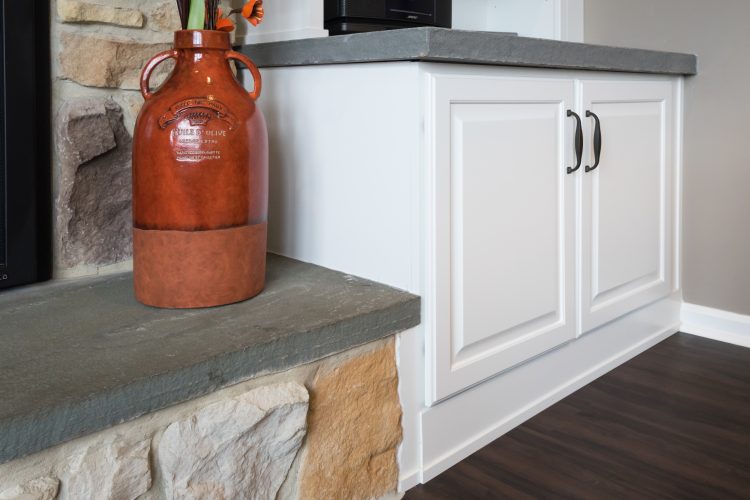
Biophilic Design Principles in Interior Spaces
Interior designs incorporating natural elements have seen an increase in residential projects. Biophilic design enriches living spaces by connecting indoor environments with nature, improving mental well-being, and creating more vibrant homes. The fusion of organic materials with modern design elements has revolutionized how we approach kitchen and living room combinations.
Natural textures and sustainable materials form the foundation of biophilic interiors. Light wood finishes paired with deep olive green cabinetry create a sophisticated balance that mirrors forest environments. Kitchen islands finished in darker, nature-inspired tones serve as striking centerpieces while maintaining the organic flow of the space.
The implementation of tactile surfaces plays a crucial role in biophilic design. Incorporating materials with varied textures – smooth stone, rough-hewn wood, and soft textiles – creates a multi-sensory experience that connects occupants with nature. This approach extends beyond aesthetics, fostering an environment that reduces stress and increases productivity in daily activities.
Color selection in biophilic design follows nature’s own patterns. The transition from lighter tones in elevated areas to darker shades at ground level mirrors natural landscapes. This principle guides the placement of lighter wood tones in upper cabinetry while grounding the space with deeper colors in base elements, creating a cohesive environment that feels both organized and organic.
Expert Tip: Incorporating reflective surfaces like water features or high-gloss finishes can amplify natural light in biophilic interiors, enhancing the sense of openness and creating a dynamic connection with the surrounding environment. |
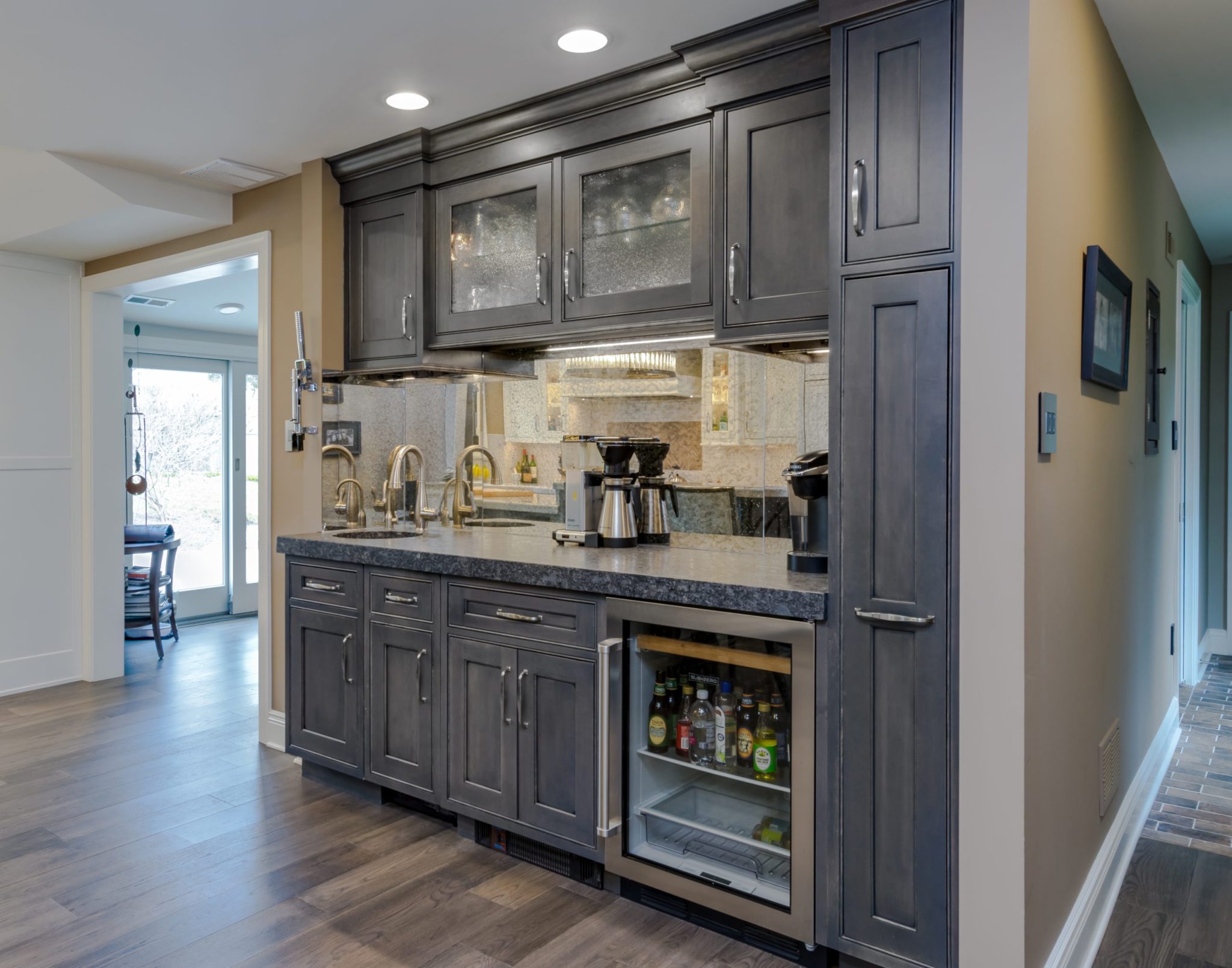
Balancing Elements with Bold Colors and Textures
Homeowners prefer bold kitchen colors mixed with neutral elements. This modern approach creates visual interest while maintaining aesthetic harmony between connected spaces.
Professional designers frequently pair dramatic cabinet hues with subtle countertop finishes to establish a refined balance in open-concept layouts. The strategic use of contrasting materials plays a crucial role in defining distinct zones within the merged kitchen and living spaces.
Natural stone countertops in muted tones provide an elegant foundation that allows vibrant cabinet colors to shine without creating visual chaos. This technique helps maintain cohesion while adding personality to each area. Here are essential strategies for incorporating bold colors and textures effectively:
- Select deep jewel tones like navy, emerald, or plum for lower cabinets while keeping upper cabinets light to prevent visual heaviness
- Introduce textural elements through grasscloth wallpaper, woven pendants, or natural fiber rugs to add depth
- Use metallic finishes in hardware and lighting fixtures to reflect light and create visual connection points
- Apply color-blocking techniques with painted woodwork to define separate functional zones
- Layer different materials like matte and glossy finishes to create a subtle contrast
The selection of accent pieces offers flexibility for seasonal updates and trend incorporation. Removable elements like bar stools, throw pillows, and artwork allow homeowners to experiment with current color trends without committing to permanent changes. These adaptable components create visual bridges between kitchen and living spaces while maintaining design versatility.
Paint transformation techniques on existing woodwork elevate the overall aesthetic impact. Professional painters recommend using high-quality, low-VOC paints for woodwork to ensure durability and a premium finish. This approach refreshes dated elements while creating purposeful color statements that tie different areas together seamlessly.
Why This Matters: Incorporating bold colors and textures thoughtfully can elevate a home’s design by adding depth and character without overwhelming the space. A well-balanced mix of hues, materials, and accent pieces ensures a cohesive and timeless aesthetic that enhances both function and style. |
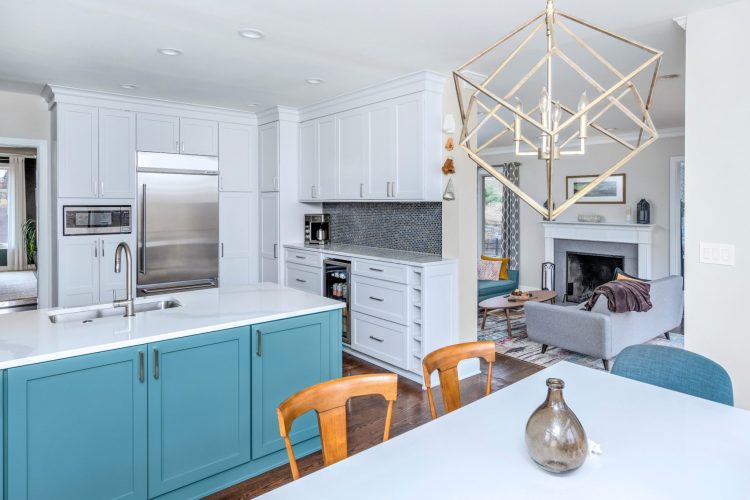
Classic Charm through Timeless Materials
Natural wood and white architectural elements have maintained their enduring appeal in interior design through the generations. The fusion of white beadboard and shiplap creates clean lines and architectural interest while establishing visual continuity between the kitchen and living spaces. White beadboard walls function as more than decorative elements – they provide exceptional durability against daily wear in high-traffic areas. The vertical grooves add subtle texture and depth while reflecting light to make spaces feel larger and more open. Strategic placement of beadboard as a backsplash or wainscoting creates a unified visual flow between cooking and lounging zones.
The organic textures of natural wood furniture pieces create an inviting atmosphere while complementing white architectural elements. A solid oak dining table or pine coffee table adds warmth and character through visible grain patterns and natural color variations. These pieces bridge the transition between kitchen and living areas by incorporating similar wood tones in both spaces.
Paint selection plays a crucial role in achieving a seamless blend. Pure whites can appear stark and clinical, while creamy off-whites create a softer, more welcoming environment.
Note: Incorporating classic materials like white beadboard and natural wood isn’t just about aesthetics—it’s about creating a space that feels timeless, inviting, and effortlessly cohesive. |
Final Design Insights
Creating a harmonious blend between kitchen and living spaces requires thoughtful consideration of both color palettes and material selections that work together seamlessly.
The shift toward warmer tones, natural materials, and biophilic design principles has revolutionized how we approach these connected spaces, offering solutions that are both aesthetically pleasing and functionally practical.
The integration of classic elements with contemporary design trends demonstrates that achieving a cohesive look doesn’t mean sacrificing personal style or comfort.
Whether embracing bold jewel tones or opting for timeless whites and woods, the key lies in maintaining visual flow while creating distinct zones that serve their unique purposes.